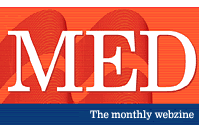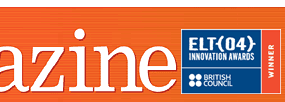 |
 |
 |
 |
 |
 |
|
|
|||||||||||||||||||||||||||||||||||||||||||||||||||||||||||||||||||||||||||||||||||||||||||||||||||||||||||||||||||||||||||||||||||||||||||||||||||||||||||||||||||||||||||||||||||||||||||||||||||||||||||||||||||||||||||||||||||||||||||||||||||||||||||||||||||||||||||||||||||||||||||||||||||||||||||||||||||||||||||||||||||||||||||||||||||||||||||||||||||||||||||||||||||||||||||||||||||||||||||||||||||||||||||||||||||||||||||||||||||||||||||||||||||||||||||||||||||||||||||||||||||||||||||||||||||||||||||||||||||||||||||||||||||||||||||||||||||||||||||||||||||||||||||||||||||||||||||||||||||||||||||||||||||||||||||||||||||||||||||||||||||||||||
|
Corpora
tips Next in a series of articles looking at ways in which teachers and students can explore words using free corpus resources on the Web. Last month's article touched on how a simple left or right word sort using WebCorp can generate a selection of collocates. For example, a left word sort on the word meeting gives us board meeting, cabinet meeting, crisis meeting, crunch meeting, crucial meeting, emergency meeting and summit meeting. However, not all collocates appear to the immediate left or right of the search term. WebCorp also offers a valuable collocation tool that goes beyond examining compound nouns and produces a table of data that enables you to further explore the relationship between your search word and the surrounding text. How to generate a collocation table To start your investigation of a particular word or phrase, you need to generate a collocation table.
This is also accompanied by a selection of Key Phrases,
in this instance:
Investigating the table This grid of numbers and words provides the key to a thorough investigation of the word meeting. The table lists the most frequent words found up to 4 places to the left or right of your search term. From the table, compound nouns such as cabinet meeting, board meeting and annual meeting are immediately obvious as these are the examples that have the most appearances in column L1 (one position to the left of the search word). Called is one of the most frequent verbs to occur
within 4 spaces of meeting.
A left word sort, position 2 shows examples of call, called, calling and calls.
According to the table, call is found both to the left and right of the word, suggesting that it is used more or less equally in both the active and passive. Other verbs in the table – attended, chaired and held appear more frequently to the right of the search term, implying that these are more normally found in the passive. Being critical - don't believe everything you read! It is important that students have an awareness of how the computer can skew results and give misleading information. This is one of the many things lexicographers have to consider when interpreting corpora search results. Street occurs frequently immediately to the left of meeting. It is also given as one of the Key Phrases – it sounds like a plausible compound, after all we can have a street party and a street protest so why not a street meeting? A left word sort in position 1 reveals that this 'collocate' is only a part of the phrase "Downing Street meeting". In the Key Phrases section, WebCorp helpfully provides a link to a Google search and clicking on this we find examples such as Arch Street Meeting House, Logging on to Wall Street: Meeting materials – further evidence that street meeting is a false collocate. Knowing which results to ignore is also an important skill when assessing corpora search results. A quick sort, using the table as a guide, will establish what is useful and what isn't. According to the table, section frequently occurs 4 places to the left but again this is not a collocate of meeting as the following extract shows.
It's easy for native-speakers to run their eye down an alphabetically sorted list of search results and pick out the collocates. Equally, it can be tempting for students to just glance at the words in blue and red and accept what they read. Therefore it is important to encourage students to examine the results closely, investigate what they see and ignore them if necessary. Using the Word Filter To generate more meaningful results, the filter on the Advanced Search page allows you to exclude certain words. By typing -street into the filter, you can cancel out the misleading "street meeting".
This also has the effect of cutting out unhelpful examples such as Blair and Downing leaving you with more 'true' collocates to work with. Top external collocates of "meeting"
(excluding stopwords)
A new entry in this improved version of the collocation
table for meeting is targets with a total of 6 appearances,
mainly occurring 2 places to the right:
However, the corresponding sort (right, position: 2) reveals
that this belongs to the verb meet rather than the noun meeting.
Thinking about the evidence – some points for discussion The collocation tables raise a lot of questions. Sorting the search results provides many of the answers. In this way, WebCorp is a valuable resource for analysing relationships between words while exposing students to a considerable amount of authentic material. The following tasks are aimed at familiarising students with the collocation table and encouraging them to think about their existing knowledge of the word.
Next in the series The next article will look at search facilities available on Web Concordancer and possible classroom applications. |
||||||||||||||||||||||||||||||||||||||||||||||||||||||||||||||||||||||||||||||||||||||||||||||||||||||||||||||||||||||||||||||||||||||||||||||||||||||||||||||||||||||||||||||||||||||||||||||||||||||||||||||||||||||||||||||||||||||||||||||||||||||||||||||||||||||||||||||||||||||||||||||||||||||||||||||||||||||||||||||||||||||||||||||||||||||||||||||||||||||||||||||||||||||||||||||||||||||||||||||||||||||||||||||||||||||||||||||||||||||||||||||||||||||||||||||||||||||||||||||||||||||||||||||||||||||||||||||||||||||||||||||||||||||||||||||||||||||||||||||||||||||||||||||||||||||||||||||||||||||||||||||||||||||||||||||||||||||||||||||||||||||||
|
|
|||||||||||||||||||||||||||||||||||||||||||||||||||||||||||||||||||||||||||||||||||||||||||||||||||||||||||||||||||||||||||||||||||||||||||||||||||||||||||||||||||||||||||||||||||||||||||||||||||||||||||||||||||||||||||||||||||||||||||||||||||||||||||||||||||||||||||||||||||||||||||||||||||||||||||||||||||||||||||||||||||||||||||||||||||||||||||||||||||||||||||||||||||||||||||||||||||||||||||||||||||||||||||||||||||||||||||||||||||||||||||||||||||||||||||||||||||||||||||||||||||||||||||||||||||||||||||||||||||||||||||||||||||||||||||||||||||||||||||||||||||||||||||||||||||||||||||||||||||||||||||||||||||||||||||||||||||||||||||||||||||||||||